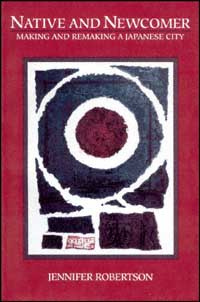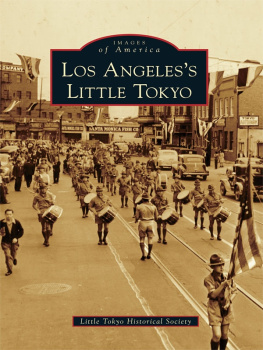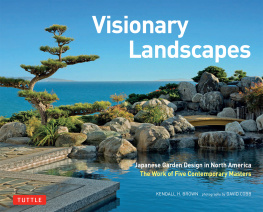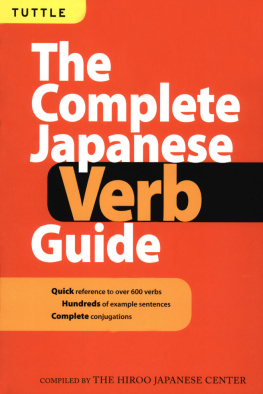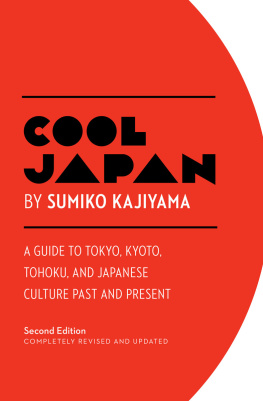Preferred Citation: Robertson, Jennifer. Native and Newcomer: Making and Remaking a Japanese City. Berkeley: University of California Press, c1991 1991. http://ark.cdlib.org/ark:/13030/ft2m3nb148/
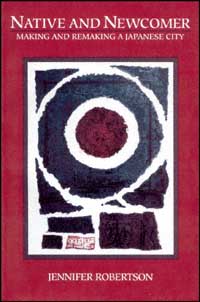 | Native and Newcomer Making and Remaking a Japanese City Jennifer Robertson UNIVERSITY OF CALIFORNIA PRESS Berkeley Los Angeles Oxford 1991 The Regents of the University of California |
For beloved Serena
Your funeral pyre is getting cold
but we will keep your words
to chase the serpents coiled around our histories
to dream new mythologies
to light our common fire.
Preferred Citation: Robertson, Jennifer. Native and Newcomer: Making and Remaking a Japanese City. Berkeley: University of California Press, c1991 1991. http://ark.cdlib.org/ark:/13030/ft2m3nb148/
For beloved Serena
Your funeral pyre is getting cold
but we will keep your words
to chase the serpents coiled around our histories
to dream new mythologies
to light our common fire.
xiii
Preface
The following is a brief sketch of the historical periods and institutions referred to in this book. The Edo (or Tokugawa) period, 16031868, was distinguished by an agrarian-based social and political order unified under a hereditary succession of generals (shogun) from the Tokugawa clan based in the capital city of Edo, whose ruling power was valorized by a hereditary succession of reigning emperors based in Kyoto. Bakufu was the term for the military government. A Confucian social hierarchy adapted from China divided the population into four unequal classes of people: samurai, farmers, artisans, and merchants, in that order. Each class was further bifurcated by a patriarchal sex/gender hierarchy. There were several categories of "nonpeople" as well, including outcastes and itinerants. Out of the vigorous urban commoner culture that developed in the late seventeenth century emerged several fine-art and performingart genres regarded today as "traditional," such as the puppet theatre, kabuki, woodblock printing, and haiku. A policy of seclusion kept the country more or less closed to foreign contact and exchange for 250 years.
Victorious antishogun forces restored the emperor to a ruling position in 1868, marking the beginning of the Meiji period (18681912) and social changes summed up by the slogans "civilization and enlightenment" and "rich country, strong army." Agrarianism gave way to industrialization, and the seclusion policy to one of imperialism. Japan's first constitution and elected assembly were informed by European (especially Prussian) government systems. The occupational hierarchy
xiv
of the Edo social system was replaced by a class system premised on economic stratification and noble lineage. Strict distinctions between female and male divisions of labor and deportment were codified in the Meiji Civil Code, operative until 1947. Generally speaking, the industrialization, militarization, and imperialism of the Meiji period escalated during the succeeding Taisho (19121926) and Showa (19261989) periods. Although universal male suffrage was inaugurated in 1925, women did not vote until 1947, when sociopolitical reforms were initiated during the American Occupation (19451952) following World War II. The late 1930s and 1940s in particular were marked by the military mobilization of the population and the state's appropriation of the Shinto religion as a national creed. The present constitution, which renounces war and (theoretically) the right to possess military potential, became effective in 1947. The emperor is recognized as a symbol of state; sovereignty rests with the people, and the Diet is the highest organ of the state.
Throughout the book, Japanese names are presented family name first unless the person publishes in English, in which case the given name appears first. All translations from Japanese to English are mine unless otherwise indicated.
xv
Acknowledgments
This book is dedicated to the late N. Serena Tennekoon (28 March 1957-2 January 1989), whose love, mind, elegance, and courage are now and forever a sacred memory. The last stanza of a poem written by Serena in 1987 in memory of a Sri Lankan woman, a feminist activist, appears on the dedication page.
The first incarnation of this ethnography was in the form of a doctoral dissertation (1985), and my first readers were the members of my dissertation committee at Cornell University. Robert J. Smith (Chair) was especially helpful at that time. There are many persons who may not read this book but whose assistance, expertise, and goodwill greatly facilitated its production at various stages. I must thank Hishinuma M., Miura S., Miyazaki H., Oda T., Ogawa S., and Oto S., all of Kodaira; the staff of the Civic Life and Social Education Departments, Kodaira City Hall; the staff of the Kodaira welfare center; the staff of the Kodaira central and branch libraries; the director, staff, and steering committee of the Research Institute for Oriental Cultures, Gakushuin University, Tokyo; and D. Chenail, P. Bryant, S. Bushika, and L. Tolle, faculty secretarial office, Williams College. I am grateful to Keith Brown, Larry Carney, Michael Cooper, Ezoe Midori, Stephanie Jed, Vivien Ng, Otobe Junko, Helen Robertson, Sugiura Noriyuki, and Sunada Toshiko for their assistance and support at various stages of this project. Many thanks to Sheila Levine, Amy Klatzkin, and Dorothy Conway for their editorial expertise, and special thanks to Maria Teresa Koreck for critical feedback.
xvi
The fieldwork and archival research making possible this book were facilitated by the following awards: the U.S. Department of Education, Fulbright-Hays Research Abroad award (no. G008300855); the International Doctoral Research Fellowship Program for Japan of the Social Science Research Council and the American Council of Learned Societies with funds provided by the Ford Foundation and the National Endowment for the Humanities; the Wenner-Gren Foundation for Anthropological Research award (no. 4492); the Japanese Ministry of Education, Monbusho Scholarship; and Sigma Xi, the Scientific Research Society.
xvii
Abbreviations
HKSS | Higashikurume-shi shi (A history of Higashikurume City) | HMSS | Higashimurayama-shi shi (A history of Higashimurayama City) | KBH | Kodaira bohan nyuzu (Kodaira crime report) | KC | Kodaira choshi (Local history of Kodaira) | KCH | Kodaira choho (town newspaper) | KGR | Kodaira-shi gikai kaigiroku (Proceedings of the Kodaira City Assembly) | KK | Kyodo Kodaira (Local Kodaira) | KSH | Kodaira shiho (city newspaper) | TKSS | Tachikawa-shi shi (A history of Tachikawa City) | TSK | Kurashi to tokei (Livelihood and statistics) | C | Kodaira shisei ni tsuite yoron chosa (Public opinion survey on the administration of Kodaira City) |
|

